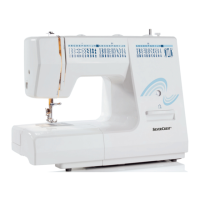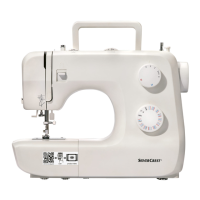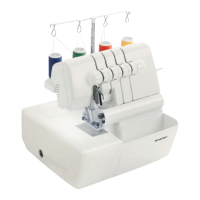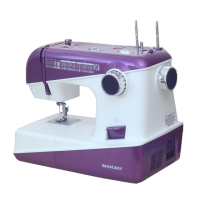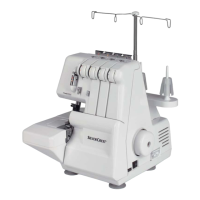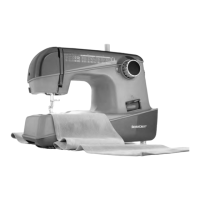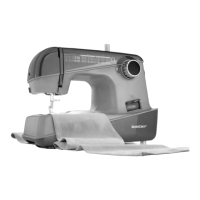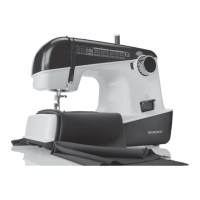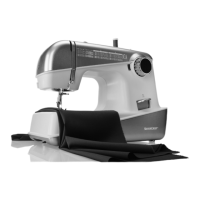29
Sewing basics
EN
v
Basic settings
Basic setting of the thread tension dial: “4”.
v
Normal thread tension for straight stitch
sewing.
NOTE
The upper thread
①
and the lower thread
②
cross approxi-
mately halfway between the front
③
and the back
④
of the
sewing material.
v
Loose thread tension for straight stitch
sewing
NOTE
The upper thread
①
is clearly visible on the back
④
of the
sewing material. Increase the thread tension by turning the thread
tension dial
③
to the right to a higher setting.
v
Tight thread tension for straight stitch
sewing
NOTE
The lower thread
②
is clearly visible on the front
③
of the
sewing material. Reduce the thread tension by turning the thread
tension dial (3) to the left to a lower setting.
4
3
1
2
v
Normal thread tension for zig zag and
decorative sewing
NOTE
The thread tension is correct when a small piece of the upper
thread
①
appears on the back
④
of the sewing material.
When sewing decorative stitches, this setting will always give you
a nicer stitch pattern and the fabric will get distorted less.
Thread tension
The thread tension dial is used to set the upper thread tension.
NOTE
Proper tension setting is important for sewing. No single tension
setting is suitable for all stitch functions and all fabrics.
①
①
①
②
②
②
③
④
④
④
③
③
Sewing basics
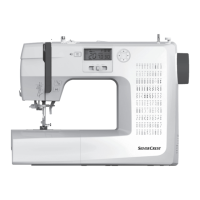
